10 Border Flowers That Will Add Structure and Color to Your Landscape
These blooms will add texture, color, and scale to the perimeters of your outdoor oasis.
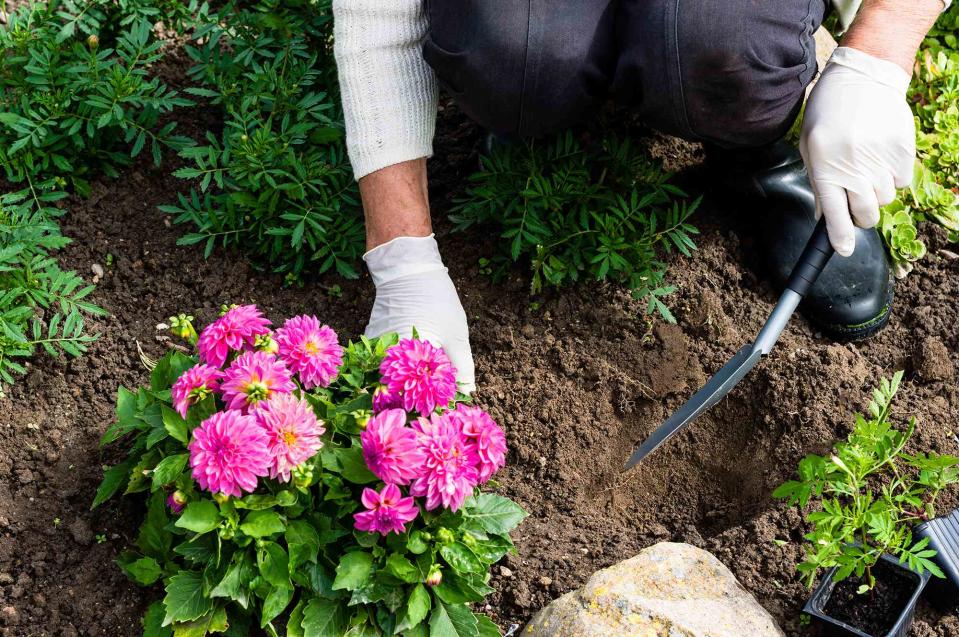
Whether you want to add color to your garden or soften the appearance of a driveway or sidewalk, many landscapes use flowers as a natural border. Not only do they provide structure, but border flowers are also ideal for pollinators—welcoming bees and butterflies to areas where there may have previously been a limited supply of pollen. With so many beautiful flowers to choose from, you want to make sure you're selecting border plants that give you the most mileage in the garden. For this reason, you should prioritize flowers that have a longer bloom season and fill your landscape with color, structure, and dimension.
Related: Exactly How to Start a Flower Garden, From Choosing Plants to Creating a Stunning Landscape
Amsonia

A mounding plant with sky-blue blooms, Amsonia Habrichtii is a great way to create structure in a border garden. "In my opinion, a border should include something unexpected," says Teri Speight, a master gardener and the author of Black Flora: Profiles of Inspiring Black Flower Farmers and Florists. "This perennial starts out with a subtle blue bloom that sits atop slender stems." The foliage rises out of the ground and reaches full bloom come spring. "In autumn, Amsonia quietly glows as the foliage turns a golden yellow," Speight says.
Zones: 5 to 8
Size: 3 feet tall x 4 feet wide
Growing conditions: Full sun to part shade; moist, well-drained soil
Discover Your Garden Zone Here
Weigela
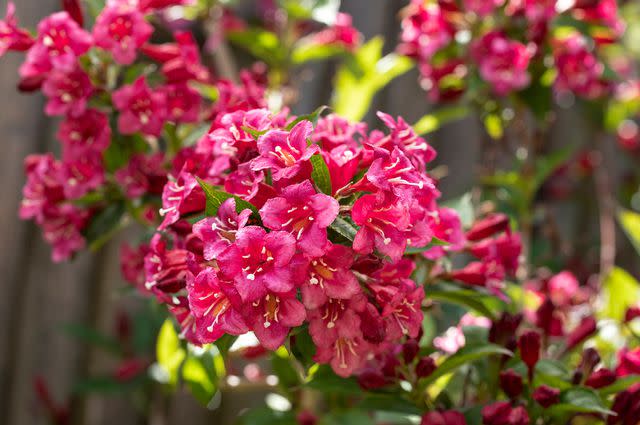
This shrub can provide interest all growing season long—plus, it comes in various sizes for multiple placement possibilities in a border. "Some have variegated foliage for further interest and their tubular flowers may be abundant all season or re-bloom, depending upon the cultivar selected," says Pamm Cooper, an extension educator at the University of Connecticut Home and Garden Education Center. Another perk? Hummingbirds and pollinators are strongly attracted to these flowers.
Zones: 4 to 8
Size: 3 feet tall x 4 feet wide
Growing conditions: Full sun to part shade; moist, well-drained soil
Veronica
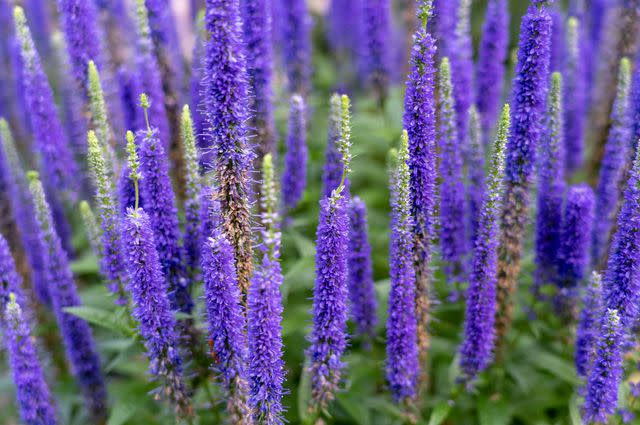
Perennials, like veronica, are great border flowers because they come back year after year. Beeline Petite Pink Veronica has a clumping growing habit that can fill in a border area beautifully with vivid magenta blooms. “Veronica performs absolutely brilliantly in my garden," says Linda Vater, plant expert for Southern Living Plant Collection. It has deep green glossy foliage and elongated blooms that pollinators adore."
Zones: 4 to 10
Size: 8 to 10 inches tall x 10 inches wide
Growing conditions: Full sun to part shade; amended, well-drained soil
Lantana
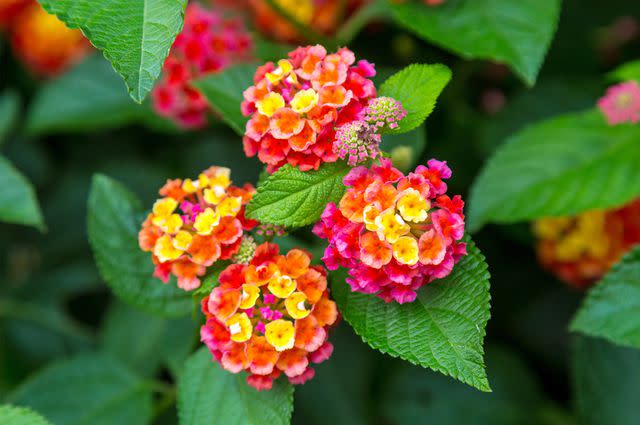
A long-blooming flower that enjoys hot conditions, lantana will put on a show all summer long. "These are basically trouble-free annuals, featuring citrus-scented foliage, a variety of flower colors (many of which change as flowers mature), and blooms that last until frost," says Cooper. "They are also food sources for hummingbirds, butterflies, and pollinators," Annuals are great for borders because they can be changed from year to year for a different look.
Zones: 8 to 10
Size: 12 to 14 inches tall and wide
Growing conditions: Full sun; slightly acidic, well-drained soil
Nepeta
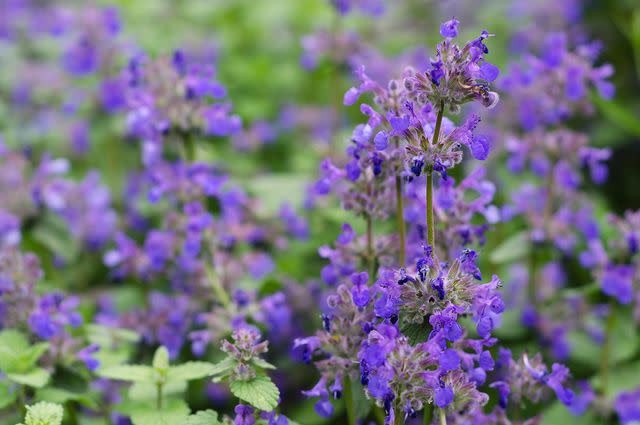
An edging option that also gives back to nature, nepeta beckons hummingbirds and butterflies to your landscape. "It softens the border's edge, is drought resistant, and the purple-and-blue blooms are simply amazing," says Speight. Plus, the pollinator plant provides an eye-catching, disease-resistant, and long-lasting accent to any border. Cutting the foliage back after the perennial blooms typically provides two to three flushes of color each season.
Zones: 4 to 8
Size: 8 inches tall x 10 inches wide
Growing conditions: Full sun to part shade; moist, well-drained soil
Dahlias
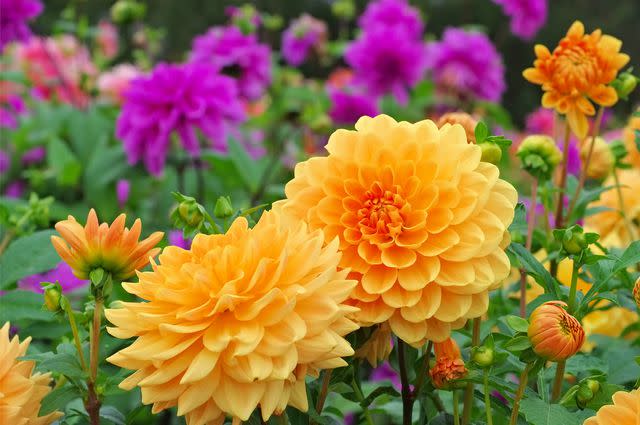
Dahlias come in a range of heights, floral textures, and colors, so you're sure to find one that adds personality to your flower border. On the shorter end, dahlias reach up to 12 to 18 inches, adding a refined touch to the garden with consistent color and height. "Dahlias can also accent specific areas of the garden, as they stand 36 to 48 inches tall or even higher," Speight says. Beyond their showy blooms, one of the biggest benefits of planting dahlias is their long bloom time. These flowers blooms from early summer until the first hard frost of autumn.
Zones: 8 to 10
Size: Depends on variety
Growing conditions: Full sun; rich, well-drained soil
Loropetalum
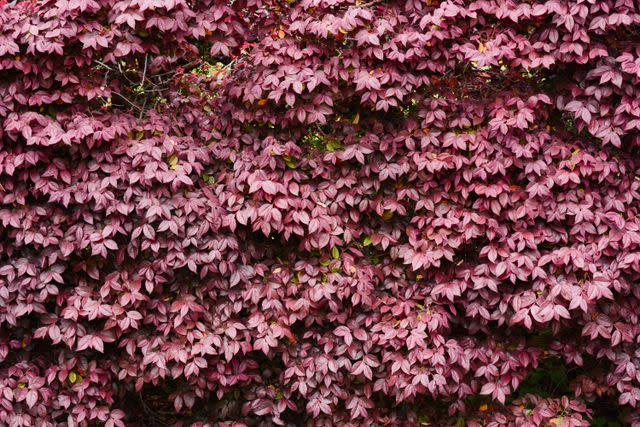
undefined undefined / GETTY IMAGES
Loropetalum, specifically Purple Daydream Dwarf Loropetalum, is a versatile option for a flowering border. Its dark purple evergreen foliage is accented with bursts of dark pink blooms in spring. “Purple Daydream is a particularly stunning variety of Loropetalum," says Janet Sluis, expert for Sunset Plant Collection. "Its growth is outward, not upward, which is a terrific feature when it comes to its utility in the landscape." The insect- and disease-resistant plant accents other plantings and blooms beautifully, Sluis says.
Zones: 7 to 10
Size: 2 to 3 feet tall x 3 to 4 feet wide
Growing conditions: Full sun to part shade; loamy, well-drained soil
Peony
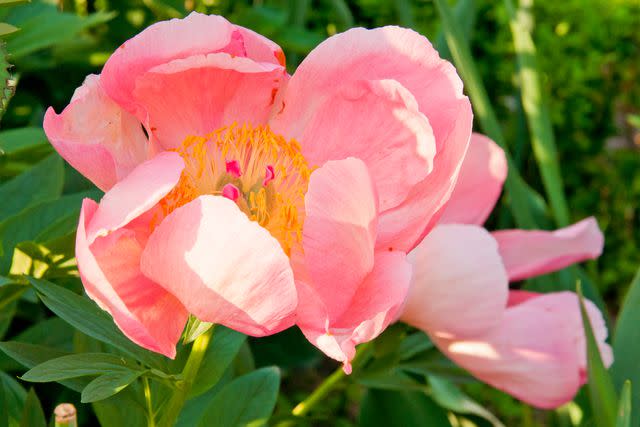
Nic_Ol / GETTY IMAGES
Peonies are a beautiful perennial flower that produces large, colorful blooms come late spring, early summer. For a more compact and slender option to grow as a border, consider 'Coral Charm' Peony—a disease resistant variety with deep coral buds. “Add elegance to any garden with this classic hardy and strong perennial," says Laura Root from Jackson & Perkins. "It’s no surprise that peonies planted now will probably still bloom one hundred years from now.” Peony blooms offer three seasons of color and won’t wilt in the heat.
Zones: 3 to 8
Size: 3 feet tall and wide
Growing conditions: Full sun; moist, well-drained soil
Hydrangea
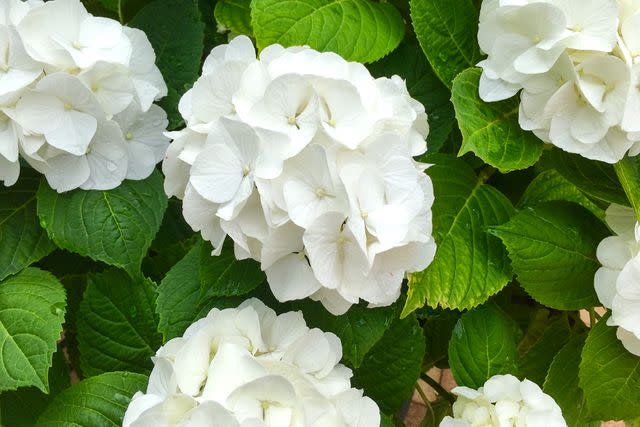
Christopher Ames / GETTY IMAGES
One of the most recognizable blooms of summer, hydrangeas are a beloved flower to many gardeners. In order for it to work as a border flower, you'll need to grow a more compact variety, like Hydrangea Everlasting Bride Bigleaf Hydrangea. Its sturdy stems support snowball-like bloom clusters and look radiant as a cut flower. “Everlasting Bride has an undeniable charisma that will be a match made in heaven for your garden," says Root. "It offers maximum satisfaction in a small-scale package.”
Zones: 5 to 9
Size: 2 feet tall x 2.5 feet wide
Growing conditions: Full sun to part shade; moist, well-drained soil
How to Grow and Care for Hydrangeas
Drift Roses
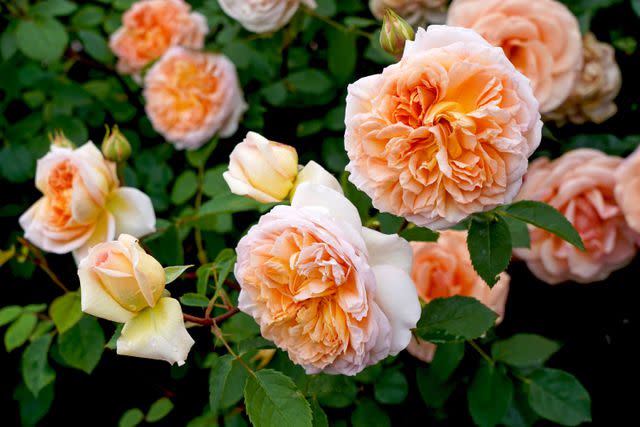
Gary Matuschka / GETTY IMAGES
Ideal as a sprawling border over the edge of a path or walkway, drift roses provide season long color. Apricot Drift boasts double apricot blooms that emerge in spring against bright green, disease-resistant foliage. “Drift Roses are a beautiful blend of groundcover roses and miniature roses that stay low and are a complement to other plant pairings around them," says Heidi Mortenson, rose portfolio manager and bloomables brand manager for Star Roses and Plants.
Zones: 4 to 11
Size: 18 inches tall x 30 inches wide
Growing conditions: Full sun to part shade; well-drained soil

